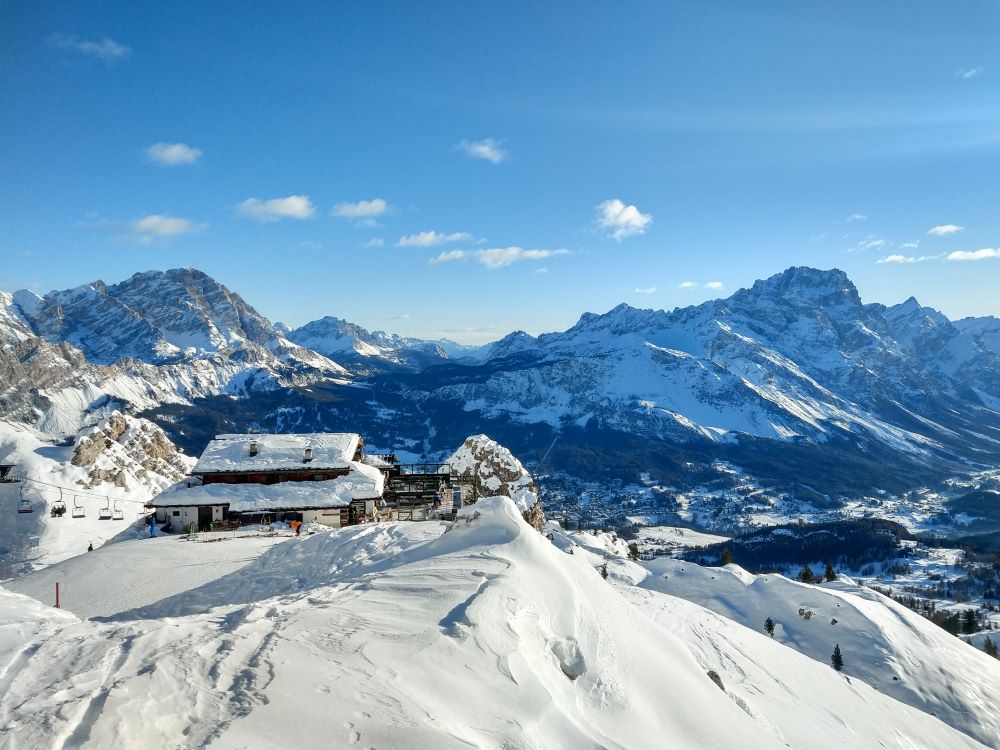
In the early decades of Alpine tourism, visitors were drawn to the mountain by a deep, almost mystical longing for discovery, exploration and epic sports. While times have changed – and so have tourists – those early days have left a heritage that is still very tangible in the Dolomites: mountain lodges.

Three of Cortina’s mountain lodges have a particularly interesting story, in which alpinism and important figures intertwine with the 1956 Olympics.
Rifugio Duca d’Aosta was built in 1938 by local Giuseppe Lancedelli in a strategic area at the base of the Tofana, at 2,098 metres of altitude. The mountain hut was named after the title of its most prestigious regular guest: Prince Amedeo of Savoy-Aosta, Duke of Aosta and member of the Italian royal family.
When Cortina hosted the Winter Olympic Games in 1956, some of the ski races were held on the Olympia slope of the Tofana ski area, which passes right aside Rifugio Duca d’Aosta. That was just one of the events of ski history witnessed by the rifugio in over 80 years of history.
Rifugio Pomedes too lies on the side of the Olympia slope, close to its starting point. The lodge owes its name to that of the area where it was built, a spot offering an extraordinarily panoramic view on the Ampezzo Valley from 2,303 metres above sea level.
Luigi Ghedina was a talented climber and successful mountain guide who dreamt of building and managing his own mountain hut to offer a comfortable and friendly refreshment place to fellow climbers and tourists. He saw the opportunity of making his dream true as the Olympics approached, and at the end of 1955 Rifugio Pomedes was ready, just in time for the Games. The mountain hut was there, serving as a privileged point of view, when Toni Sailer won the downhill race, his first gold medal of the three he was going to win in Cortina.
The third mountain lodge whose history is interwoven with that of the 1956 Olympics is Baita Pié Tofana. Pié Tofana – literally “Tofana’s foot” – was the place chosen for the timekeepers’ hut during the Olympics. The area was indeed close to the final part of the Olympia piste.
After the Games, the hut was abandoned for a few years, until Livio Calzà, brother of Olympian Carlo Calzà, decided to transform it into a restaurant. Baita Pié Tofana became one of Cortina’s finest and most famous restaurant, and its excellent service and cuisine have lived on to this day, as proven by the fact it was awarded one Plate in the 2021 Michelin Guide.
Rifugio Duca d’Aosta, Rifugio Pomedes and Baita Pié Tofana prove that major sporting events can leave a heritage that goes beyond sports. Sixty-five years after 1956, they are still part of Cortina’s economic and social fabric, and they will still be there in 2026, to offer once more great piste-side comfort as the Olympic athletes race outdoor.